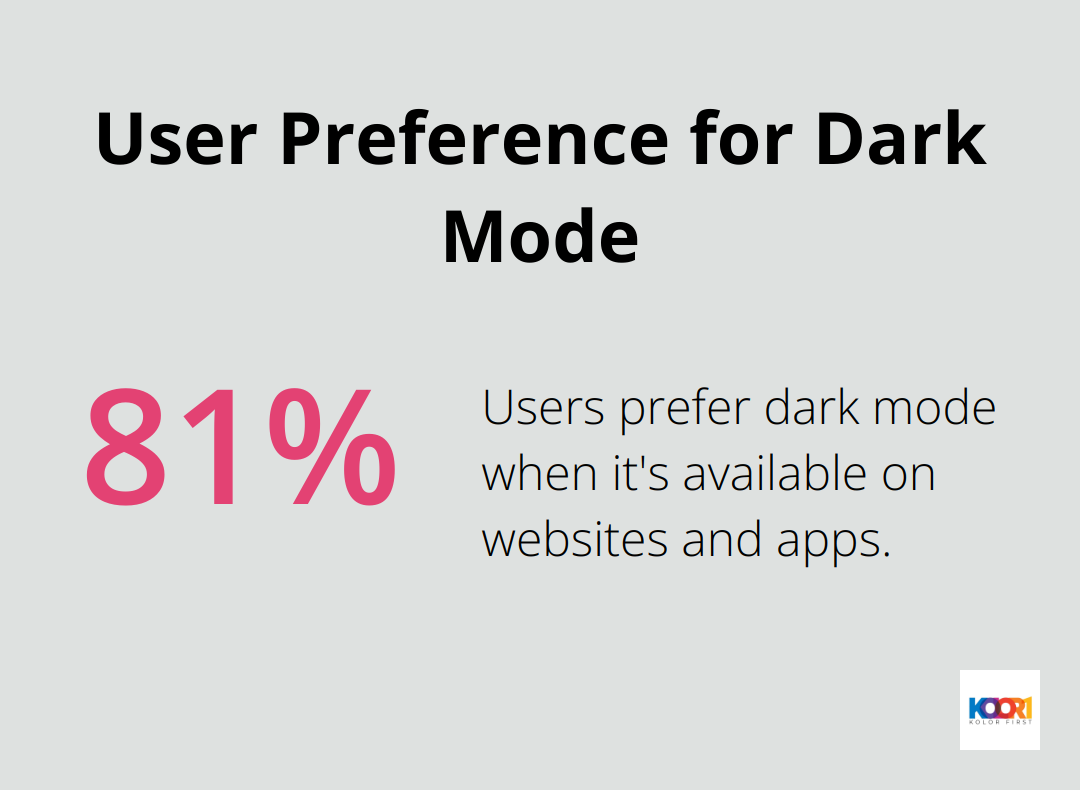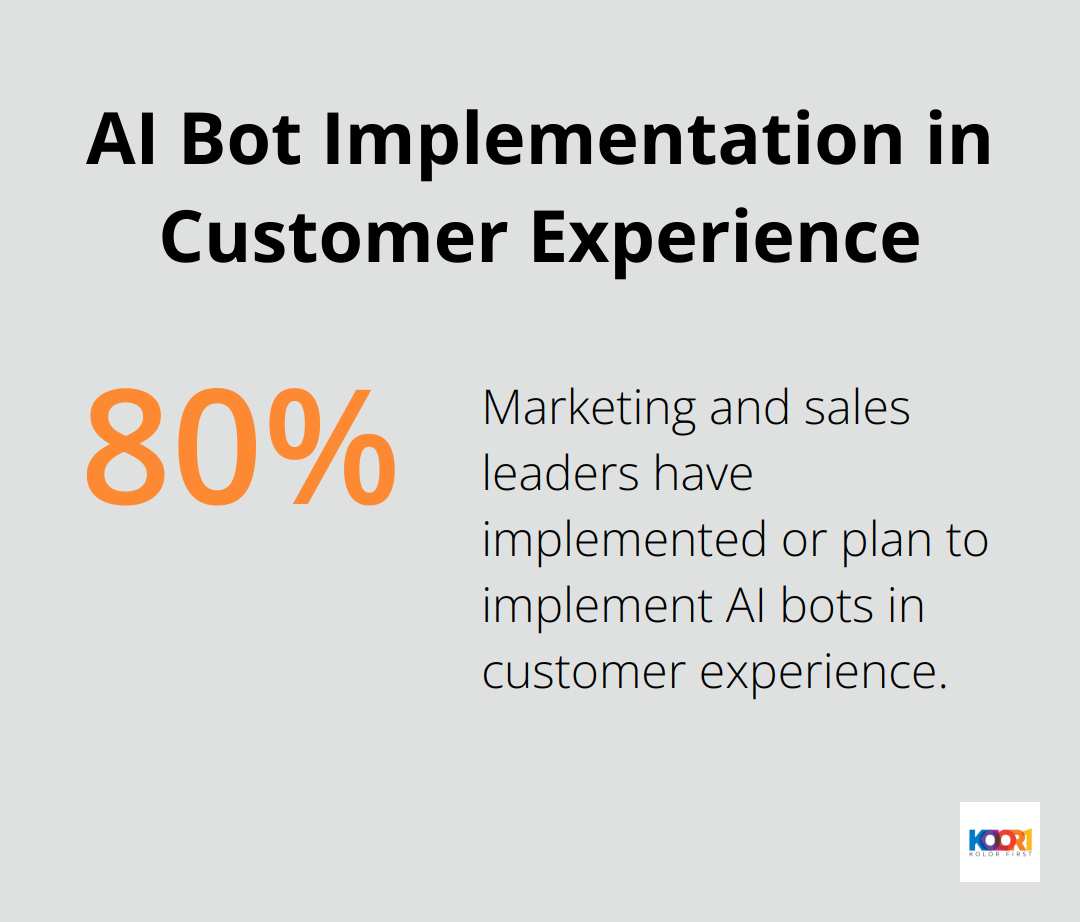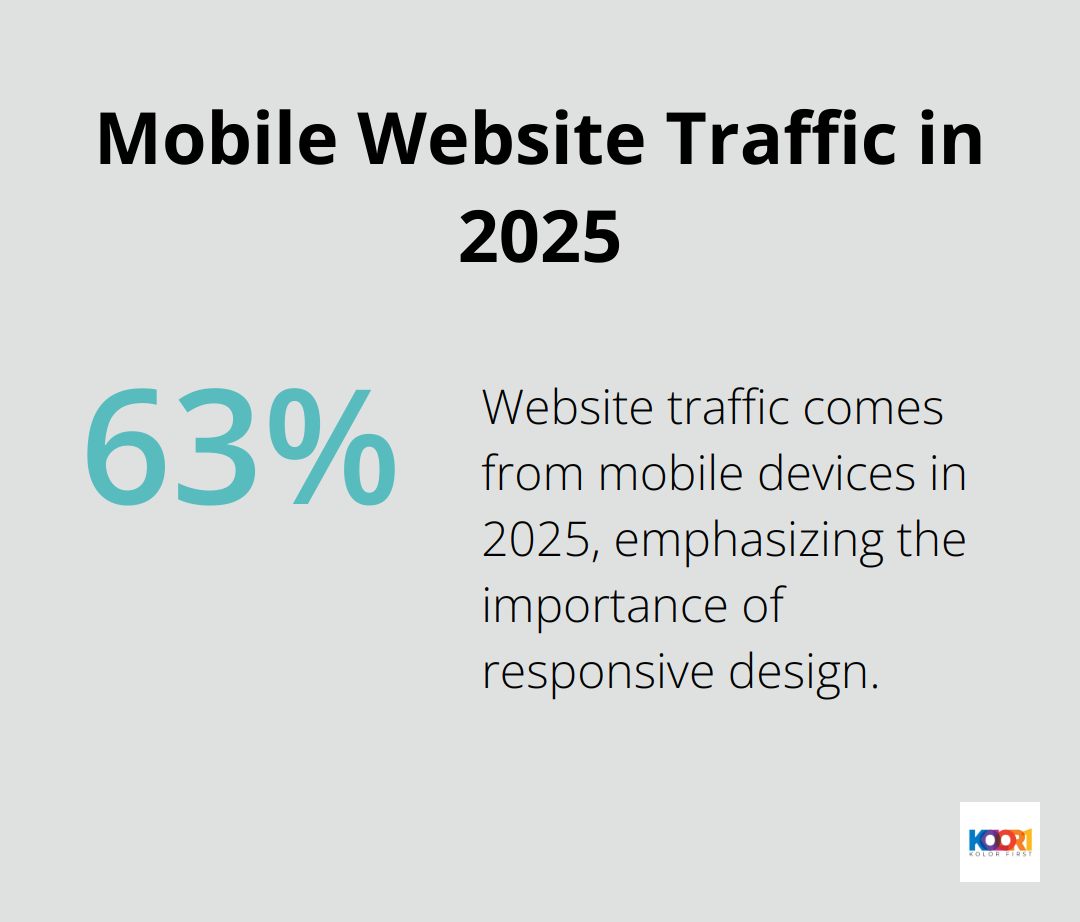Last Updated: June 2, 2025
The Future of Web Design: Trends and Technologies Shaping the Digital Landscape
At Kolorfirst LLC, we’re constantly tracking the pulse of contemporary web design. The digital landscape is evolving at breakneck speed, with new trends and technologies emerging almost daily.
In this post, we’ll explore the cutting-edge developments shaping the future of web design and provide practical strategies for staying ahead of the curve.
Table of Contents
- What’s Shaping Modern Web Design?
- How Technology Reshapes Web Design
- How to Future-Proof Your Website
- Final Thoughts
- Frequently Asked Questions
What’s Shaping Modern Web Design?
Several key trends reshape the web design landscape. These trends transform how users interact with websites and how businesses communicate their brand message.
Simplicity Reigns Supreme
The Impact of Load Time on Conversion Rates
Minimalist designs dominate the web. They load faster, offer easier navigation, and look great on mobile devices. A study showed that a mere 0.1s change in load time can influence every step of the user journey, ultimately increasing conversion rates by 8%. The removal of unnecessary elements results in decreased load times and increased user engagement.
“A mere 0.1s change in load time can influence every step of the user journey, ultimately increasing conversion rates by 8%.”
The Rise of Dark Mode
Dark mode isn’t just easy on the eyes; users now expect it. A survey by Android Authority revealed that 81.9% of users prefer dark mode when available. Designers now implement toggles that allow users to switch between light and dark modes, which enhances accessibility and user comfort.

Micro-interactions: Small Details, Big Impact
Micro-interactions provide visual feedback to users through subtle animations. They serve a functional purpose beyond aesthetics. UX Booth reported that micro-interactions can increase user engagement by up to 70%. Designers incorporate these small animations into buttons, form fields, and navigation elements to guide users and create more intuitive interfaces.
Voice: The New Frontier
Voice User Interfaces (VUI) have become a reality. A PwC study found that 90% of surveyed respondents were familiar with voice-enabled products and devices, with 72% having used a voice assistant. Designers now explore ways to make websites voice-searchable and develop voice-activated navigation options.
Accessibility: A Primary Focus
Web accessibility extends beyond compliance; it’s about reaching a wider audience. The World Health Organization estimates that 15% of the world’s population lives with some form of disability. Designers now prioritize features like high-contrast text, keyboard navigation, and screen reader compatibility from the start of every project.
These trends alter not only the appearance of websites but also their functionality and user interaction. As we move forward, the focus shifts to technological advancements that further shape the future of web design (including AI, PWAs, and AR). These innovations promise to revolutionize user experiences and push the boundaries of what’s possible in web design.
How Technology Reshapes Web Design
Technology propels web design into new frontiers, transforming how websites are built and experienced. This chapter explores the cutting-edge innovations that redefine the digital landscape.
AI and Machine Learning: Personalization Redefined
The Rise of AI-Powered Customer Experience
Artificial Intelligence (AI) and Machine Learning (ML) revolutionize web design through hyper-personalization. A study by Accenture reveals that 91% of consumers prefer brands offering relevant recommendations. Around 80% of marketing and sales leaders have implemented or planned implementation of AI bots into customer experience. ML algorithms analyze user behavior to adjust content, layout, and color schemes in real-time, creating truly adaptive websites.

Progressive Web Apps: The Best of Both Worlds
Progressive Web Apps (PWAs) erase the boundaries between websites and native applications. They deliver app-like experiences without downloads, reducing friction in the user journey. PWAs also excel in data efficiency and offline functionality, making them ideal for markets with limited connectivity.
Case Study: Pinterest’s PWA Success
When Pinterest rebuilt their mobile web experience as a PWA, they saw remarkable results:
- 60% increase in core engagements
- 44% increase in user-generated ad revenue
- 50% increase in ad click-throughs
- 40% increase in time spent on site
This case study demonstrates the potential impact of PWAs on user engagement and business metrics.
Augmented Reality: Web Experiences Come to Life
Augmented Reality (AR) transcends gaming to make significant strides in web design. IKEA’s AR app, which allows virtual furniture placement, increased purchase intent by 36%. Similar applications emerge across industries, from virtual try-ons in fashion to interactive product demonstrations in tech. AR integration in websites becomes more accessible, with frameworks enabling developers to create AR experiences without extensive 3D knowledge.
WebAssembly: Turbocharging Web Performance
WebAssembly enhances web performance by allowing high-performance code to run in browsers. WebAssembly offers consistent and predictable performance compared to JavaScript. This technology unlocks possibilities for complex web applications (previously unfeasible), from advanced 3D rendering to real-time video editing in the browser.
5G: Unleashing Design Potential
The 5G network rollout promises to revolutionize web design with speeds up to 100 times faster than 4G. This leap in connectivity empowers designers to create richer, more immersive web experiences without compromising load times. An Ericsson report predicts that by 2025, 5G networks will carry 45% of global mobile data traffic, paving the way for seamless integration of high-quality video, complex animations, and data-heavy applications.
“By 2025, 5G networks will carry 45% of global mobile data traffic, paving the way for seamless integration of high-quality video, complex animations, and data-heavy applications.”
These technological advancements not only alter website aesthetics but fundamentally change user interactions with digital content. The next chapter will explore best practices for future-proofing your website, ensuring it remains at the forefront of these exciting developments.
How to Future-Proof Your Website
Embrace Responsive Design
Over 63% of website traffic comes from mobile devices in 2025, making responsive design essential. A Google study revealed that 61% of users won’t return to a mobile site they had trouble accessing, and 40% visit a competitor’s site instead. To retain potential customers, your website must adapt seamlessly to all screen sizes and devices.

Optimize for Speed and Performance
Website speed significantly impacts user experience and search engine rankings. Akamai reports that a 100-millisecond delay in website load time can reduce conversion rates by 7%. To boost your site’s performance:
- Compress images and use next-gen formats (like WebP)
- Minify CSS, JavaScript, and HTML
- Leverage browser caching
- Use a Content Delivery Network (CDN)
These techniques will reduce load times and improve user satisfaction.
Prioritize Sustainable Web Design
Green web design gains traction as businesses and consumers become more environmentally conscious. The Internet consumes about 416.2TWh of electricity per year (more than the entire United Kingdom). To reduce your website’s carbon footprint:
- Choose a green hosting provider
- Optimize images and videos
- Implement efficient coding practices
- Use system fonts instead of custom fonts where possible
These practices benefit the environment and improve your site’s performance and user experience.
Focus on User-Centric Design
User experience (UX) and user interface (UI) design play a paramount role in creating engaging and converting websites. A well-designed site can have up to a 200% higher visit-to-order conversion rate than a poorly designed site.
To enhance your website’s UX/UI:
- Conduct regular user testing
- Implement intuitive navigation
- Use clear and compelling calls-to-action
- Ensure consistency in design elements across your site
Adapt to Emerging Technologies
The web design landscape constantly evolves with new technologies. Staying informed and adapting to these changes will future-proof your website. Some technologies to watch include:
- Voice User Interfaces (VUI)
- Augmented Reality (AR) integration
- AI-powered chatbots and personalization
- Progressive Web Apps (PWAs)
You don’t need to implement every new technology, but awareness of these trends allows you to make informed decisions about which ones align with your business goals and user needs.
Final Thoughts
Contemporary web design demands constant adaptation and innovation. Trends like minimalist layouts, dark mode, and micro-interactions reshape user experiences, while technological advancements such as AI, PWAs, and AR push the boundaries of possibility. The future of web design lies in responsive, high-performance websites that prioritize user experience and sustainability.
Kolorfirst LLC specializes in crafting innovative branding and digital marketing solutions that leverage the latest web design trends. We help businesses create unique brand identities and enhance their online presence through engaging user experiences. The key to success in contemporary web design is adaptability, as new technologies emerge and user expectations evolve.
We encourage you to embrace innovation in your web design practices. You can significantly impact your digital presence and user engagement through AI-driven personalization, AR integration, or sustainable design principles. The digital world never stands still, so stay informed and innovative to ensure your website meets current standards and prepares for future developments.
Ready to Future-Proof Your Website?
At Kolorfirst LLC, we specialize in creating cutting-edge web designs that leverage the latest trends and technologies. Contact us today for a free consultation and discover how we can transform your online presence.
Frequently Asked Questions
Q: How often should I update my website design?
A: While there’s no one-size-fits-all answer, it’s generally recommended to review and update your website design every 2-3 years. However, you should continuously make minor updates and improvements based on user feedback and analytics.
Q: What’s the difference between AI and Machine Learning in web design?
A: AI is a broader concept of machines being able to carry out tasks in a way that we would consider “smart.” Machine Learning is a subset of AI that focuses on the ability of machines to receive data and learn for themselves, changing algorithms as they learn more about the information they’re processing.
Q: How can I make my website more accessible?
A: Some key steps include using proper heading structure, providing alt text for images, ensuring color contrast meets WCAG standards, making your site keyboard-navigable, and using ARIA labels where necessary. Regular accessibility audits can help identify areas for improvement.
Q: What are the key benefits of implementing a Progressive Web App?
A: PWAs offer several benefits including faster load times, offline functionality, app-like experience without the need for downloads, improved performance on low-quality networks, and the ability to send push notifications. They can significantly enhance user engagement and conversion rates.
About the Author:
Jane Doe is a senior web designer at Kolorfirst LLC with over 10 years of experience in creating innovative digital experiences. She specializes in responsive design and emerging web technologies.






